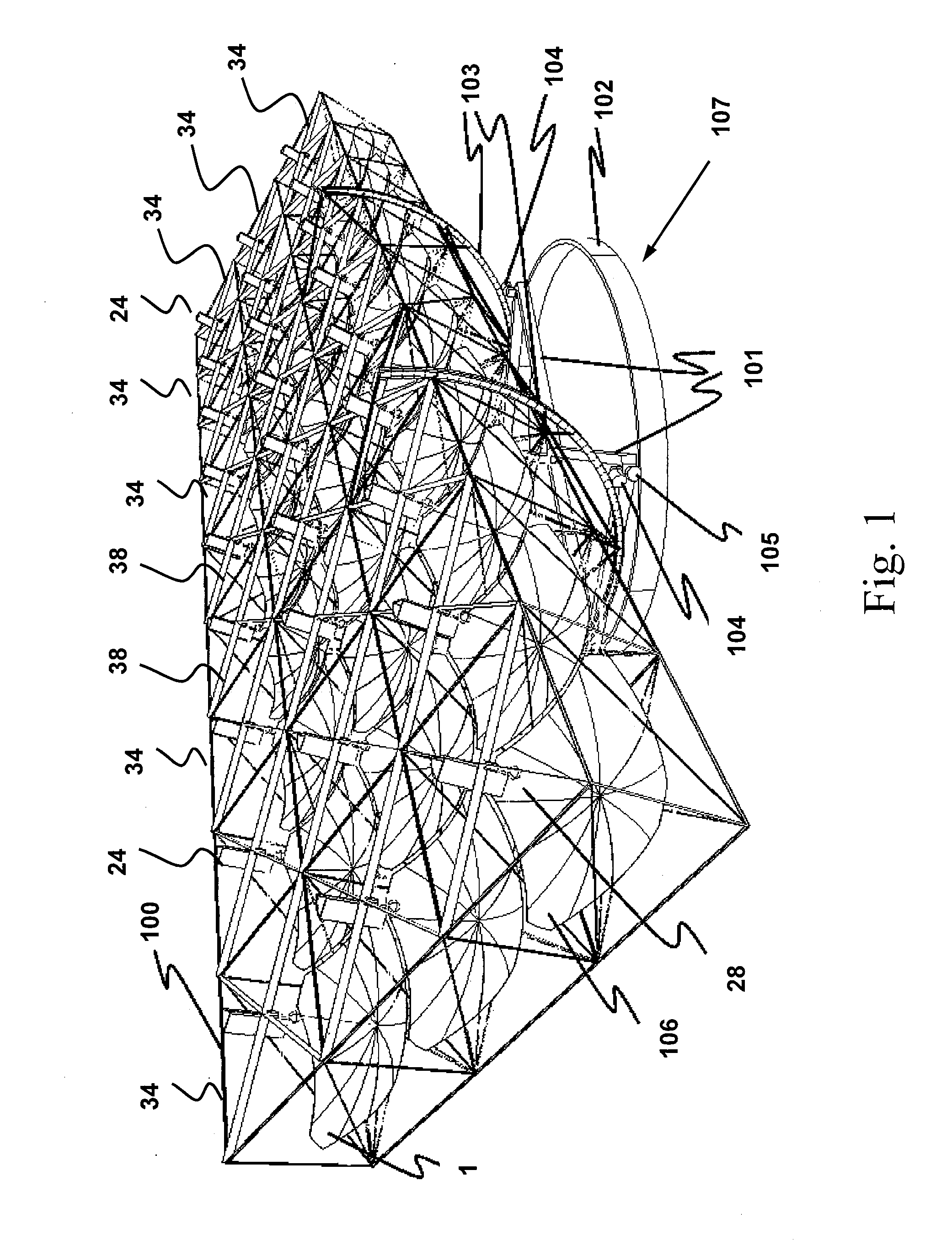Solar concentrator apparatus with large, multiple, co-axial dish reflectors
a concentrator and coaxial dish technology, applied in the direction of heat collector mounting/support, light and heating equipment, manufacturing tools, etc., can solve the problems of increasing sea levels enough to put many coastal cities under water, limited thermal conversion efficiency, and climate change and the world in which we live, so as to minimize the cost of the supporting mechanical structure used, maximize the effect of stiffness and strength, and minimize the mass
- Summary
- Abstract
- Description
- Claims
- Application Information
AI Technical Summary
Benefits of technology
Problems solved by technology
Method used
Image
Examples
Embodiment Construction
[0082]FIG. 1, FIG. 2 and FIG. 3 illustrate a presently preferred embodiment of the invention comprising a plurality of unit reflector cells 34 with large paraboloidal reflectors 1 held co-axial in a rigid framework 100. In the illustrated example, an array of twenty-seven unit reflector cells 34 is shown in a rectangular grid that is three rows by nine columns, but other configurations and arrangements may be used with a plurality of concentrators arranged in various other configurations. It is desirable to have the capability of pointing the array of reflectors 1 at the sun as the sun moves across the sky during the day. In order to accomplish this, the common axis of the reflectors 1 is oriented to the sun by a two-axis tracker 107. In this exemplar embodiment, a flat truck 101 turns on a circular track 102 on the ground to provide azimuthal rotation of the framework 100 supporting the paraboloidal reflectors 1. Elevation motion is provided by two C-rings 103 attached to the rigid...
PUM
 Login to View More
Login to View More Abstract
Description
Claims
Application Information
 Login to View More
Login to View More - R&D
- Intellectual Property
- Life Sciences
- Materials
- Tech Scout
- Unparalleled Data Quality
- Higher Quality Content
- 60% Fewer Hallucinations
Browse by: Latest US Patents, China's latest patents, Technical Efficacy Thesaurus, Application Domain, Technology Topic, Popular Technical Reports.
© 2025 PatSnap. All rights reserved.Legal|Privacy policy|Modern Slavery Act Transparency Statement|Sitemap|About US| Contact US: help@patsnap.com



